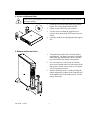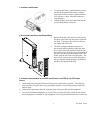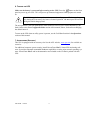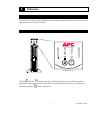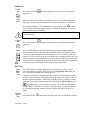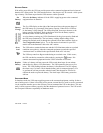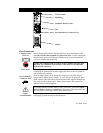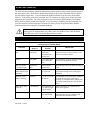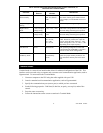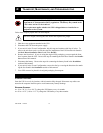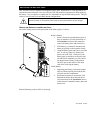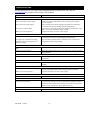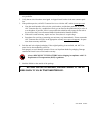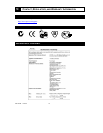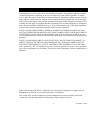
13 990-1060B 12/2005
NOTE: SETTING THESE ITEMS REQUIRES SOFTWARE, OPTIONAL HARDWARE, OR
CONFIGURATION IN TERMINAL MODE.
FUNCTION
F
ACTORY
DEFAULT
USER SELECTABLE
CHOICES
D
ESCRIPTION
Synchronized
Turn-on Delay
0 seconds 20, 60, 120, 240,
480, 720, 960 sec-
onds
The UPS will wait the specified time after
the return of utility power before turn-on
(for example, to avoid branch circuit over-
load).
Output Voltage
Setting
230 VAC 240, 220, 225 VAC Nominal output voltage setting.
High Transfer
Point
+ 10% of output
voltage setting
+5%, +15%, +20% Maximum voltage that the UPS will pass to
the load during internal bypass operation.
Low Transfer Point -15% of output
voltage setting
-20%, -25%,
-30%
Minimum voltage that the UPS will pass to
the load during internal bypass operation.
Output Frequency Automatic 50 ± 3 Hz,
50 ± 0.1 Hz,
60 ± 3 Hz,
60 ± 0.1 Hz
Sets the allowable output frequency of the
UPS. Whenever possible, the output fre-
quency tracks the input frequency. Auto-
matic setting allows 50 +/-3 or 60 +/-3 Hz
depending on the input frequency.
Unit Position Tower Rack Mount The operating configuration of the UPS.
Optional Rail Kit SURTRK is required to
convert to rack mount configuration.
Number of Exter-
nal Battery Packs
0 Number of con-
nected battery
packs.
Defines number of attached external battery
packs for proper runtime prediction. Do
not include the internal pack in this num-
ber.
TERMINAL MODE
Terminal mode is a menu driven interface that allows for enhanced configuration of the UPS. This
interface can be accessed using a computer and a common serial communication application, such as
Hyperterminal. To enter and use the Terminal Mode:
1. Connect a computer to the UPS using the cable supplied with your UPS.
2. Launch a standard serial communication application, such as Hyperterminal.
3. Specify the communications port (comm. port) to which you have connected.
4. Set the following properties: 2400 baud, 8 data bits, no parity, one stop bit, and no flow
control.
5. Press the enter or return key.
6. Follow the instructions on the screen to continue in Terminal Mode.



